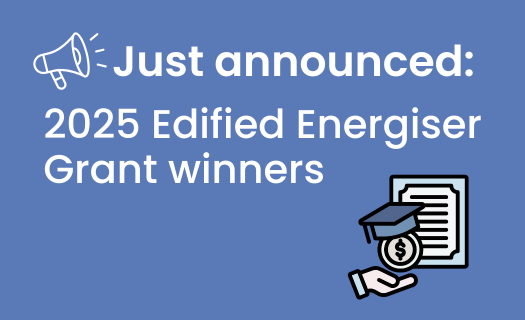Create a winning TNE strategy: Do’s and don’ts for universities and colleges
In an era of global interconnectedness and government-imposed limits on onshore international students, universities and colleges across many countries are turning to transnational education (TNE) to expand reach, enhance reputation, grow and/or diversify revenue, and offer students a global learning experience.
However, embarking or continuing on a TNE journey comes with challenges and considerations. While the upsides can be extremely rewarding, the downsides include draining time, energy and resources away from core business, and being costly and painful to exit from.
At Edified, we’ve been assisting clients with their TNE strategy, tactics, capabilities, governance, processes and documentation since 2018 – when the uptake of TNE was significantly increasing globally. We’ve learnt a few things along the way that we’d like to share.
A TNE jumble
Does this look familiar?
- A disorganised and disjointed set of offshore operations
- A mixture of offshore learning centres or campuses, twinning programs, partner arrangements, standalone programs and hybrid delivery
- No apparent reason why a specific set of operations has been assembled
- No clear goals
Sometimes the mix is driven by central administration, sometimes by departments or faculties, and sometimes even by enthusiastic individuals. Then institutions try to retrofit their strategy to make sense of it.
If we were to write down what their actual strategy has been over past years, it would sound something like this:
"Entertain any ideas or projects that come into the institution from any partner, from any country, through any department or person. Choose projects based on whatever people feel like at the time."
I’m exaggerating of course, for effect. But in some institutions, this is not too far from the truth.
Where to play and how to win
Many institutions don’t have a real strategy when it comes to TNE. Fate and circumstances have decided this for them.
A Canadian client we worked with recently was fortunate in that TNE is a ‘blue ocean’ for them. Having never done it before, they had the luxury of working up a long-term strategy starting with the end state they want, and working backwards to engineer what they need to do now to achieve this aspiration. On the other hand, an Australian university client we worked with had several disparate TNE operations globally originating within different faculties. The challenge was to help them imagine their desired future state and then re-engineer their current operations to harmonise with their future vision.
Wherever you are up to in your TNE journey, whether you’re deep in with multiple operations around the world, or if you haven’t even started, there’s always time to get clear on your strategy and to decide where to play and how to win while avoiding potential pitfalls. There’s also time to optimise your global offering and maximise your financial, reputational and social returns.
Five do’s and don’ts when thinking about TNE:
✅ Do have a strategy
The essence of strategy is ‘where to play and how to win’. Clearly define where you want to be in 10 years time. Then articulate in simple words where you’re going to play and how you’re going to win. Having a clear vision of what success looks like and how you’ll achieve it helps keep everyone focused and heading in the right direction.
✅ Do conduct thorough market research
Before venturing into a new geographical territory, it is crucial to understand the educational needs, cultural nuances, economic conditions and regulatory landscape of the target market. This involves gathering data on student demand, competitors, local partners and potential barriers to entry.
✅ Do develop a sustainable financial model
Many institutions think they are making money when, in fact, they are drawing on internal resources at a cost to local delivery. A sustainable financial model is critical for the long-term success of a TNE program. This involves careful budgeting, understanding your cost and revenue drivers and ensuring from the outset that your project will generate sufficient returns to make it worthwhile. You’ll also need to consider the best model – e.g. local partner, intermediary partner joint venture, wholly owned, etc.
✅ Do build internal capabilities
To run successful TNE programs, you need a team that has the skills and the resources to properly ensure success. You also need robust processes and procedures to start, manage and optimise your TNE operations.
✅ Do have a robust model to assess opportunities
Many institutions assess each opportunity in a vacuum. This can lead to subjective decisions based on personal preferences rather than facts about opportunities and risks. It is better to have or create a model for assessing opportunities and ensuring they fit with your overall strategy. Saying ‘no’ to unsuitable opportunities early can save you a lot of time and resourcing. Having an agreed model can also help your internal stakeholders be clear about what to look for and what to spend time on.
❌ Don’t underestimate the complexity
TNE is a complex endeavour that requires meticulous planning and execution. Avoid underestimating the effort required in terms of regulatory compliance, governance, cultural adaptation and quality assurance.
❌ Don’t neglect the market
This is marketing 101. But many institutions try to sell what they have, rather than create what the market wants. Selling what you have is tempting, but if you create what the market wants, drawing on your strengths, success is much more likely.
❌ Don’t overlook support services
TNE students often require additional support services, such as academic advising, career counselling and mental health support. Neglecting these aspects can impact student satisfaction and success. Neglecting to factor them into your budget and planning can lead to serious stress for your staff, your partners and your students.
❌ Don’t cut corners on quality
Maintaining the quality and reputation of the home institution abroad is paramount. Avoid cutting corners on faculty recruitment, infrastructure and academic standards to save costs. You’ll end up paying for low quality down the track. Regular audits, feedback mechanisms and continuous improvement practices are key.
❌ Don’t forget to assess the opportunity costs
Your TNE initiative may stack up on all your criteria, but is it the best opportunity? Going with a particular option that is not the best is likely to prevent you, at least in the short term, from pursuing other opportunities.
Embarking on a TNE journey offers institutions the opportunity to expand their global footprint and provide students with enriching and diverse educational experiences. We hope these do’s and don’ts can help you navigate the complexities of TNE and develop a strategy that is sustainable, impactful and beneficial to all stakeholders involved, including, most importantly, your students.
Get in touch
We can help you make strategic decisions on the best markets, partners and delivery models, reducing complexity, optimising processes and ensuring compliance.
Discuss your TNE aspirations and challenges with us.

Mark Pettitt
Founder and CEO



